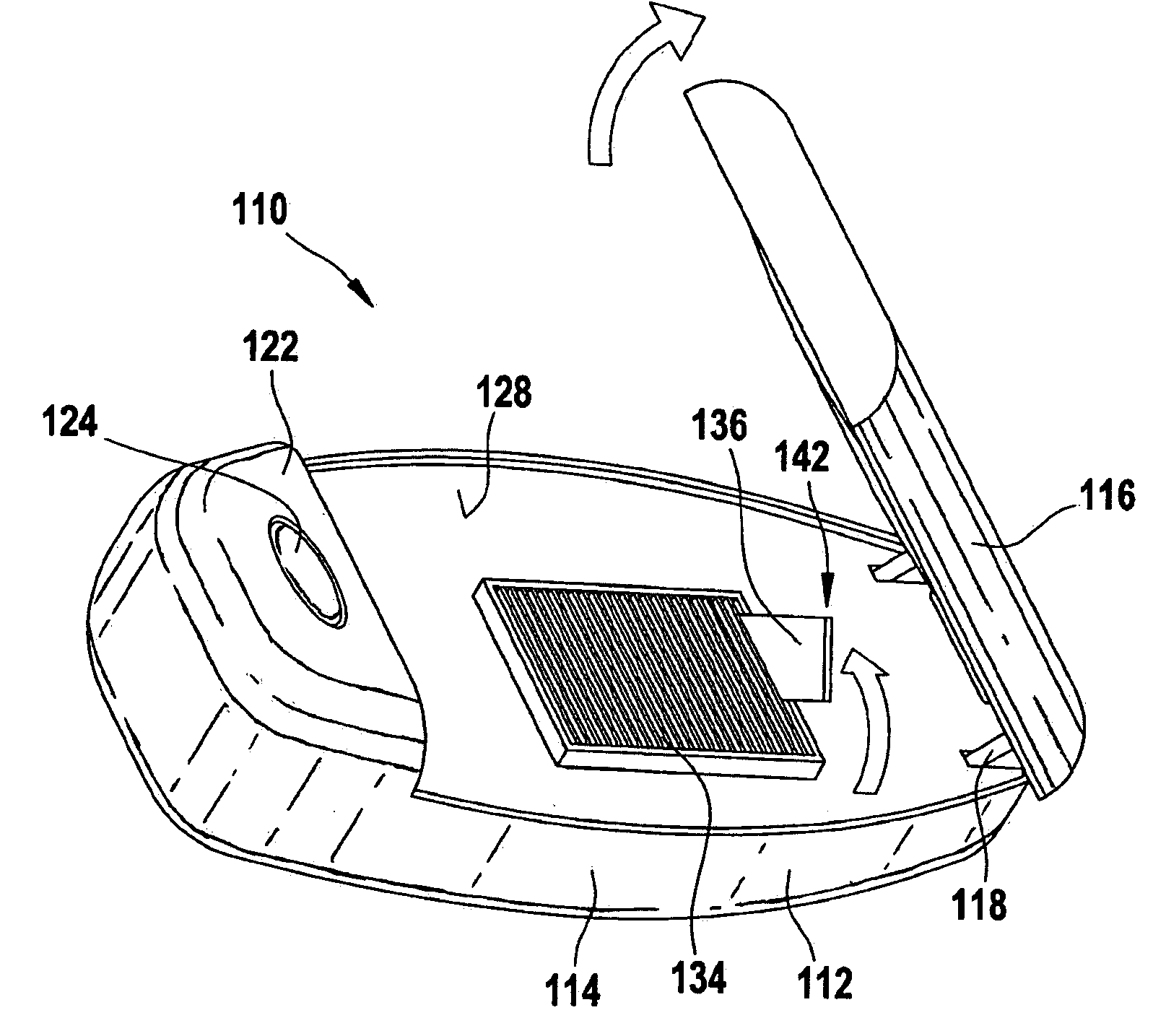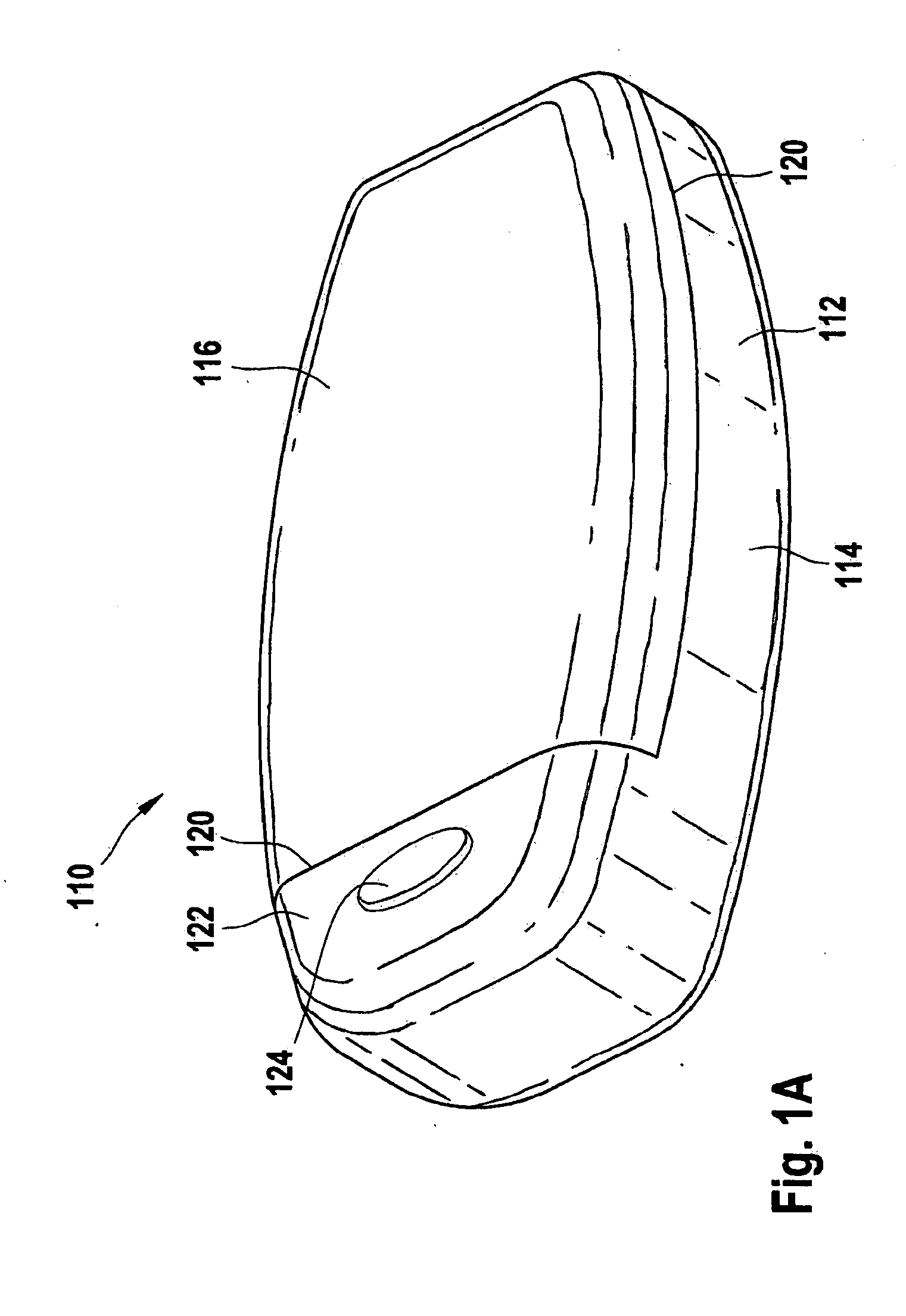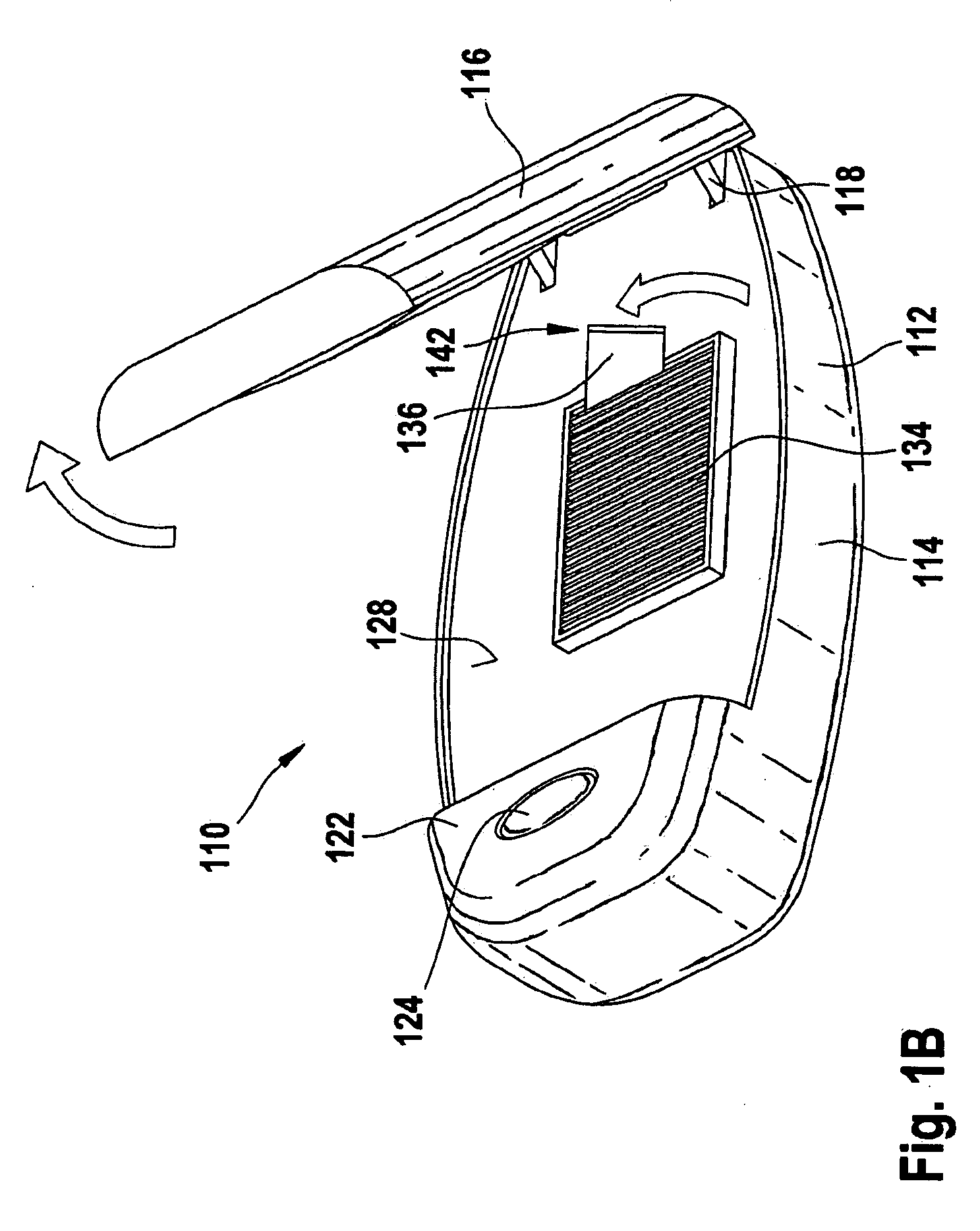Test device for determining an analyte concentration
a test device and analyte technology, applied in the field of test devices, can solve the problems of increasing the space occupied by the measuring system, increasing the material cost of the measuring system, and fewer test strips being able to be accommodated in the corresponding container, so as to achieve simple decoupling of gears and increase the discreetness of the devi
- Summary
- Abstract
- Description
- Claims
- Application Information
AI Technical Summary
Benefits of technology
Problems solved by technology
Method used
Image
Examples
Embodiment Construction
[0053]The following description of embodiments of the present invention is merely exemplary in nature and is in no way intended to limit the present invention or its application or uses.
[0054]A first illustrative embodiment of a test device 110 according to the invention for determining a blood glucose concentration is shown in FIGS. 1A to 1C. FIG. 1A shows the test device 110 in the closed state, FIG. 1B shows the test device 110 during opening, and FIG. 1C shows the test device 110 in the opened state.
[0055]In one embodiment, the test device 110 comprises a housing 112 with a bottom part 114 and a lid 116 (upper part of housing). The bottom part 114 and the lid 116 are connected to each other along a hinge 118, said hinge 118 at the same time being configured, in other embodiments, to translate force. This translation of force allows the force applied for opening the lid 116 to be used in means provided in the bottom part 114 of the housing for rotating a test strip (see below).
[0...
PUM
| Property | Measurement | Unit |
|---|---|---|
| length | aaaaa | aaaaa |
| concentration | aaaaa | aaaaa |
| optical | aaaaa | aaaaa |
Abstract
Description
Claims
Application Information
 Login to View More
Login to View More - R&D
- Intellectual Property
- Life Sciences
- Materials
- Tech Scout
- Unparalleled Data Quality
- Higher Quality Content
- 60% Fewer Hallucinations
Browse by: Latest US Patents, China's latest patents, Technical Efficacy Thesaurus, Application Domain, Technology Topic, Popular Technical Reports.
© 2025 PatSnap. All rights reserved.Legal|Privacy policy|Modern Slavery Act Transparency Statement|Sitemap|About US| Contact US: help@patsnap.com



